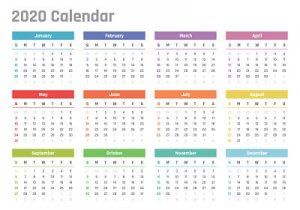2021 Trends: Engaging customers who aren’t leaving their homes
April 20, 2021

In this third column of the 2021 trends series, I want to look at a trend that I think will be short-lived but important. While we wait for the vaccine to become widely administered here in the U.S., many people will choose to stick close to home.
Most of us are champing at the bit to get back “to normal,” which will include travel, dining out, going back to church, gathering with large groups of friends at sporting events and live performances, and big family events like weddings and funerals. Research shows that most professionals who are still working from home are eager to get back into a work environment.
But for some, this homebody stance is ideal, and they don’t want it to go away. Some will seek jobs that allow them to continue to work from home, and the curbside pickups and home deliveries of the past year will no doubt be available long after the pandemic is over.
What will this mean for us?
If you’re a local business, this is good news. Yes, e-commerce is surging and will be about 32% higher than in 2019. But that’s still only 14.5% of all U.S. retail spending.
This means there’s still plenty of money to be earned by brick-and-mortar businesses.
If you’re a local retail business, this is a massive opportunity for you. Consumer sympathies toward the struggles local businesses have endured in 2020 are at an all-time high. People want to buy local.
To take full advantage of this unique moment in time, you should consider:
Increasing your visibility. There are consumers out there who want to give their money to locally owned businesses. But they can’t give it to you if they don’t know you’re there. Better signage, investing in advertising, partnering with other companies to spotlight a shopping district or region, and finding ways to earn the media’s attention will all help make sure you get your fair share of the local spend.
Develop multiple delivery models. Some of your customers want to get out of the house and visit your establishment. Others will fully expect you to bring your offerings to them as you have for the past 10 months. Expecting everyone to come to you is probably a thing of the past. Businesses have demonstrated that they are willing to have multiple conduits for their customers. Even long after the pandemic is over, some of your customers are simply going to prefer the convenience of some level of delivery.
You can’t over-communicate. This has been a recurring theme of the pandemic, but it is still pure gold. There are no excuses anymore. Your social media activity and your ongoing communications with customers have to level up. Not only do you need to stay top of mind, but you need to make them feel informed, safe and excited about your products and services.
Garner the support of your suppliers. Now would be an excellent time to partner with suppliers to put together creative offers, unique products, special financing or enticing pricing to encourage your potential customers and regulars to come back in or to place an order. Work together to share the expense of these offers and reap the benefits of the added exposure and sales volume.
This is your opportunity to make up some of the revenue you lost in the second quarter of 2020. There’s a lot of pent-up demand and cash and a desire to support locally owned businesses. To take advantage of this trend, you need to be on your consumers’ radar screen with an offer enticing enough for them to leave their house or, at the very least, invite you to leave it on their doorstep!
This was originally published in the Des Moines Business Record, as one of Drew’s weekly columns.
More

 There’s some good news and optimism from global marketing leaders looking for growth recovery in 2021. Nearly two-thirds of those surveyed by the CMO Council say they will boost marketing spend in the coming year and most don’t expect to downsize or re-structure their organizations.
There’s some good news and optimism from global marketing leaders looking for growth recovery in 2021. Nearly two-thirds of those surveyed by the CMO Council say they will boost marketing spend in the coming year and most don’t expect to downsize or re-structure their organizations.





